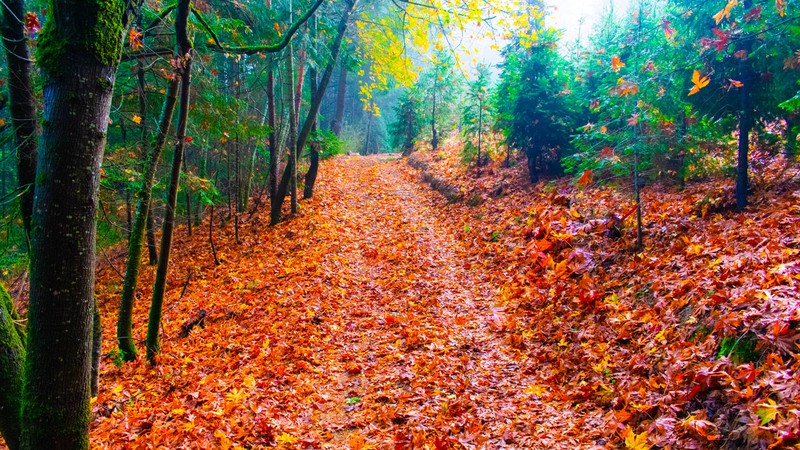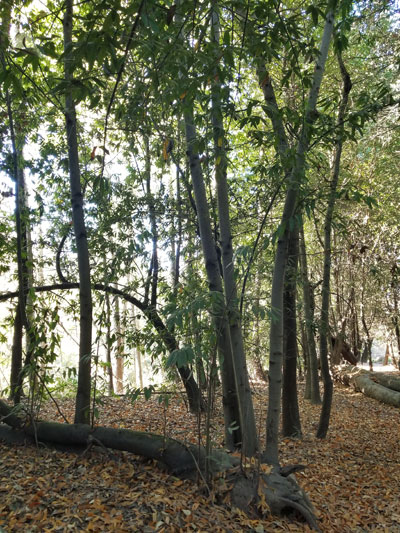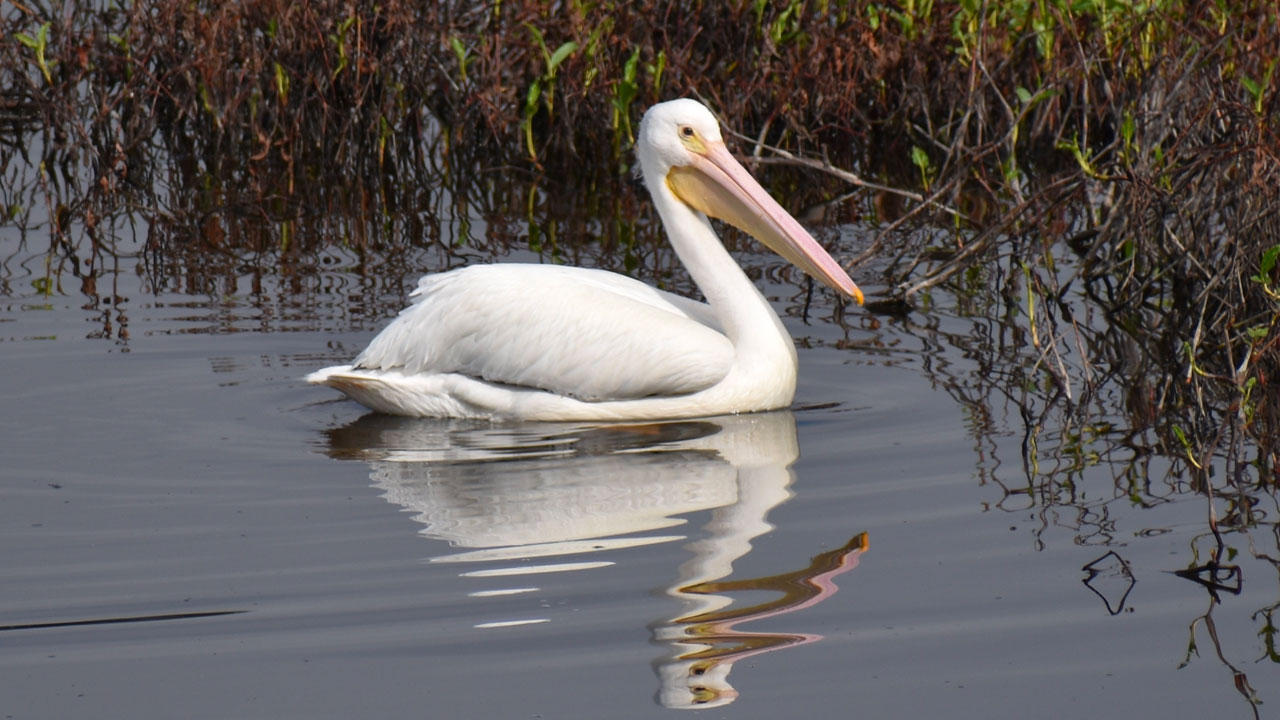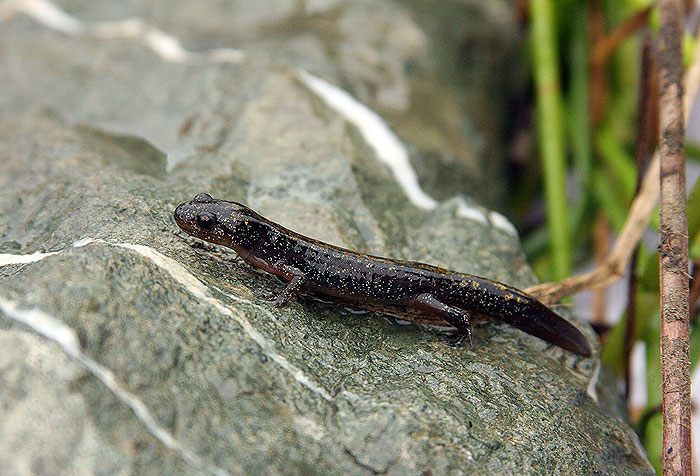The Santa Cruz Museum of Natural History offers tips for getting the most out of the coming fall season.

Though the Santa Cruz Mountains are known for redwoods and other evergreens, deciduous trees bring color to autumn hikes. Curtis Moranda Shutterstock
As ribbons of crisp, cool air begin to cut through the final heatwaves of summer, signaling the return of pumpkin-spice-everything, the natural world around us enters a transition phase, leaving summer behind and preparing for winter. Although the Santa Cruz area enjoys a relatively mild climate year-round, there are several natural wonders that only make an appearance this time of year. We’ve teamed up with the Santa Cruz Museum of Natural History again to highlight a few natural phenomena you can appreciate this fall.
“When I think about fall, I really think about foraging,” says Marisa Gomez, public programs manager for the museum.
Foraging is a great way for people to familiarize themselves with the natural environment, she explains. When foraging from nature, it is important to follow local regulations, take only what you need, and always leave enough behind to support the continued success of the habitat. Here is a helpful foraging guide from the museum.
In addition to being a season of harvest, fall also signals the arrival of several northern visitors looking for a warm place to stay for the winter.
Here are 10 natural wonders of Santa Cruz you won’t want to miss this season.
Fall is the perfect time to forage for the seed pods of the California black walnut (Juglans californica). The California black walnut is “a really beautiful, big tree that has this super groovy bark and feathery, pinnate leaves,” Gomez says. “Around the fall, you’ll notice these really big green balls that have dropped from the trees on the ground, and some of them have turned pitch black.” Inside those balls is an edible nut. But be careful when you open the shell, especially if it’s turned black, as it can stain your hands, Gomez warns. You can also save the black hulls and use them to make natural dye. Where do you find these trees? “They’re all over the place,” she says. “Once you start looking for them, you can’t help but see them.”

This season is also the best time to forage for acorns from oak trees. “In Santa Cruz, you're most likely to be seeing coast live oak, and then there's also tan oak, which is not a true oak, but has the tastiest acorns,” Gomez explains. Acorns are one of the most abundant natural food sources in California, and were a dietary staple for the Ohlone. However, eating raw acorns isn’t recommended. These nuts contain a high amount of tannins, which taste bitter and are toxic if consumed in high amounts. It’s best to remove the tannins, either by roasting, soaking, or boiling the nuts. Then you can either eat the nut, grind it into paste, or grind it and dry it out to make a flour. The tannin-containing water can then be used as a dye.

Another tree to appreciate in the fall is the California bay laurel (Umbellularia californica)—not only for its nuts but also for its sweet aroma. “It starts to smell sort of like bubblegum,” Gomez says. Walk through the mixed evergreen forests in Henry Cowell State Park or Nisene Marks State Park and breathe in the sweet aroma of blooming bay laurels. This is also the time of year when the trees will be dropping their nuts. Once the nuts are shucked and roasted, you can grind them up into a powder that makes a flavorful addition to chocolate desserts, such as truffles, Gomez says.
Although Santa Cruz County is adorned with a plethora of evergreen trees (thank you, majestic redwoods!), there are plenty of deciduous trees here too, including those just mentioned, with leaves that turn shades of yellow, orange, and red before dropping from their branches. As the weather cools and days get shorter, deciduous trees stop producing chlorophyll, the green pigment plants use to make food. The mixed evergreen forests of the Santa Cruz Mountains include trees with color-changing leaves, but perhaps one of the best places to observe this sign of fall is smack in the middle of the city, along Walnut Avenue. The street known for its stately Victorian homes also boasts several mature, deciduous trees that create a gorgeous canopy of color this time of year.
Several species of migrating animals make their way to the Santa Cruz area in the fall, seeking a warmer environment to spend their winter in. Beginning in October, keep your eye out for loons headed to the ocean from northern, inland lakes. The common loon (Gavia immer), red-throated loon (Gavia stellata), and Pacific loon (Gavia pacifica) can all be spotted in coastal waterways this time of year, before they head further out to sea for the winter. Common loons and red-throated loons generally travel alone, but if you’re lucky you may come across an entire flock of Pacific loons.
Fall is a great time for birdwatching in the sloughs of Watsonville, Gomez says. “Struve Slough is my favorite down there because it’s just so accessible.” A wide variety of aquatic migratory bird species hang out in these sheltered waterways, either settling in for the winter or taking a pit stop on their journey south. Ducks, in particular, are abundant this time of year, she said. Look for northern shovelers (Spatula clypeata), pintail (Anas acuta), American wigeons (Mareca americana), hooded mergansers (Lophodytes cucullatus) and various teal species.

One of the easiest feathered fall visitors to identify is the glorious white pelican (Pelecanus erythrorhynchos). These birds are one of the oldest native birds to North America and are also one of the largest, reaching up to 20 pounds with a wingspan up to 20 inches. But these large birds don’t always hang around very long, so it can be hard to spot them, Gomez says. White pelicans spend much of the year inland, where they breed, and then travel as far as the coasts of Central and South America for the winter.
Fall marks the arrival of one of everyone’s favorite seasonal visitors: the monarch butterfly (Danaus plexippus). These endangered insects visit the northern California coast each year to spend the winter hanging from native Monterey cypress and Monterey pine trees, and in Santa Cruz on non-native eucalyptus trees. “It’s a good time to visit places like Natural Bridges, Lighthouse Field, and then other parts of the Monterey Bay like Pacific Grove to see the clusters of monarch butterflies,” Gomez points out. The butterflies will begin migrating north and east from the California coast in mid-February, traveling as far as southern Canada but staying west of the Rocky Mountains.
Birds and insects aren’t the only creatures migrating this time of year—so are the gray whales (Eschrichtius robustus). In the fall, the eastern North Pacific gray whales leave their feeding grounds off the coast of Alaska and head south toward their breeding grounds off the coast of Baja California in Mexico. These large baleen whales undertake one of the longest migrations of any mammal, making a 10,000-mile round-trip journey every year. Fortunately for us whale watching land-dwellers, gray whales prefer to hug the coastline as they travel, making them relatively easy to spot from shore.

There are a few different species of salamanders that live in the Santa Cruz area but their populations are small, thanks to urban development taking over much of their natural habitat. Nonetheless, you can still spot them and fall is a great time to do so if you know where to look. The endangered Santa Cruz long-toed salamander (Ambystoma macrodactylum croceum) will be making its way to breeding ponds from the forested uplands where it spends the summer. Another species in our area, the California giant salamander (Dicamptodon ensatus), becomes easier to find after a fall rainstorm. Immediately after the first good rain of the season is the best time to go searching for salamanders and other amphibians. Look for them near the banks of small ponds and streams.
Visit the Santa Cruz Museum of Natural History at 1305 East Cliff Drive to learn more about the local natural wonders listed here and many others. And in October, be sure to check out the museum’s Halloween-themed exhibit called “Maritime Mysteries and Monsters,” exploring otherworldly phenomena above and below the ocean surface.
About our expert: As a Bay Area native, Marisa Gomez didn’t have to travel far to find her niche. She moved to Santa Cruz in 2011, and initially became involved with the museum as a volunteer. “I grew up in museums,” she said, so volunteering at the museum was a natural way to connect with her community. Now, she enjoys getting to work with expert naturalists and novices alike, and helping people of all backgrounds connect with nature.